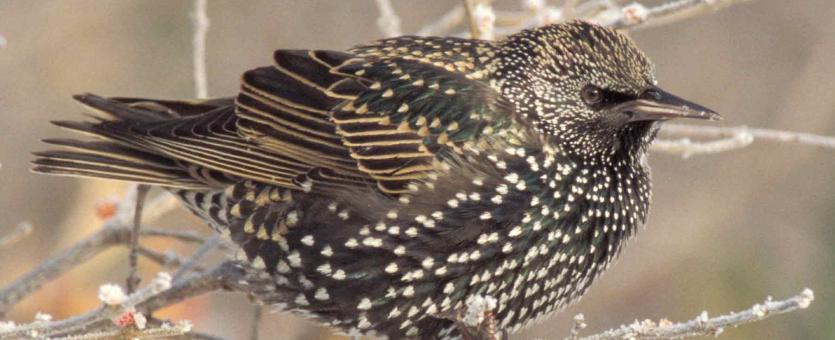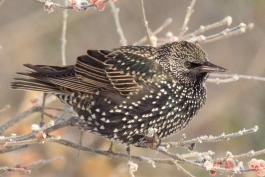
European starlings are stocky, short-tailed birds, distinguished from other black birds by their distinctive chunky shape. Adult upperparts appear black but are glossy greenish black. The yellow bill is sharp-pointed and long. In fall after molting, the wings and tail are edged in brown; the entire plumage is speckled with white spots. In winter, the bill is brownish yellow and darker; the white speckling wears off toward spring. Young birds are brownish gray with dull streaking below and a brown bill.

Habitat and Conservation
Food
Status
Life Cycle
Human Connections
Ecosystem Connections




About 350 species of birds are likely to be seen in Missouri, though nearly 400 have been recorded within our borders. Most people know a bird when they see one — it has feathers, wings, and a bill. Birds are warm-blooded, and most species can fly. Many migrate hundreds or thousands of miles. Birds lay hard-shelled eggs (often in a nest), and the parents care for the young. Many communicate with songs and calls.





















